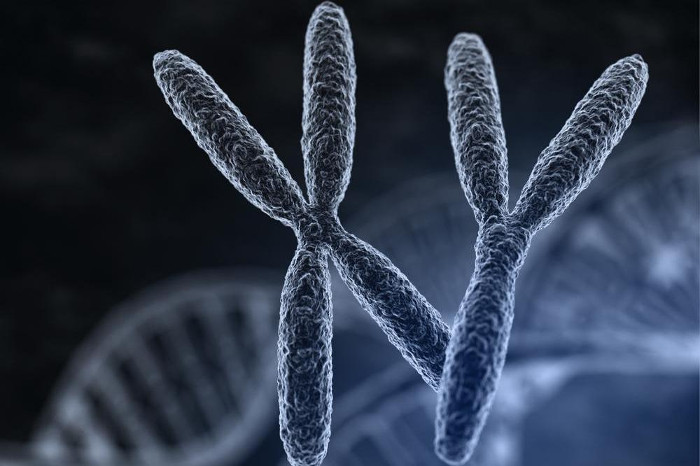The caveman virus can increase the birth rate of boys
The DNA of a caveman virus that lived 1.5 million years ago could block the X chromosome, increasing the male sex ratio in the fetus.
In human evolution, the human genome selects pieces of DNA from outside, primarily from caveman viruses. Most of these DNA fragments are inactive, but some play a new role as determining the sex of the developing fetus.
Researchers at Yale University, USA, believe that an ancient strand of twisted DNA , integrated into mammalian genomes 1.5 million years ago, plays an important role in locking the X chromosome. Their report was released on March 30 in the journal Nature.

X and Y chromosomes determine sex.(Photo: Tatiana Shepeleva).
The team found that some fetuses deactivate the virus on the X chromosome, affecting the sex ratio and how it works. In the epigenetic indicator that researchers found, a methyl ring is added to adenine, one of four nucleotide compounds that form the basic DNA pair, creating the ability to break genes.
High indicator levels will cause the virus to stop working, causing the X chromosome to not show and the male sex ratio to be 2: 1. When the molecular indicator is at a normal level, the probability of a child having a male or female sex is 1: 1.
"Why is the sex ratio in mammals due to the remnants of an ancient virus determined to be an interesting question," commented Andrew Xiao, a geneticist at Yale Stem Cell Center.
Researchers believe that mammals can inhibit gene expression through the control of nucleotide compounds called cytosine . Xiao and colleagues identified the new mechanism that could be used to control cancer, because previous research has shown that cancer cells rely on viruses to spread.
"In addition to the fetus, the only place people can see that the virus is active is in tumors and nerves," Xiao said.
- Birth rate in Japan increased
- Early birth rate increases
- By 2100, Earth will have 11 billion people
- IVF fertilization is easy to give birth to a son
- Eating fish at least once a week helps teen boys increase intelligence
- Why do billionaires often lay many sons?
- A mother born 5
- Tips for giving birth at will: less effective
- New virus outbreaks occur via USB
- Discovered the 5,000-year-old homosexual remains
- Chinese toys contain toxic substances that feminine boys
- Revive the 700-year-old virus
 Why do potatoes have eyes?
Why do potatoes have eyes? 'Tragedy' the world's largest carnivorous life: Death becomes ... public toilet
'Tragedy' the world's largest carnivorous life: Death becomes ... public toilet Tomatoes were once considered 'poisonous' for 200 years
Tomatoes were once considered 'poisonous' for 200 years Detecting microscopic parasites on human face
Detecting microscopic parasites on human face